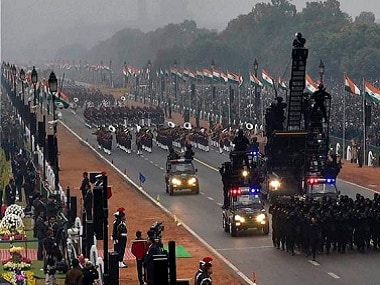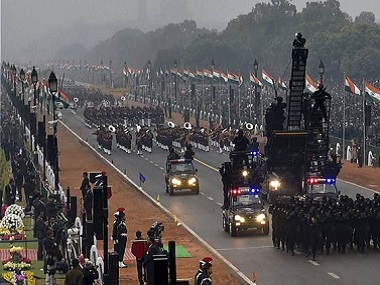Size matters. And it matters more when the context is the defence capabilities of a complex country like India. Argument favouring downsizing of armed forces based on the premise that manpower costs eat into capital acquisitions is not valid. Force composition and its organisational structure are dictated by its role, resources, doctrine, nature of adversaries, technology available and national aspirations. Unsatisfactory equipment profile of Indian armed forces and some critical deficiencies are an outcome of inadequate allocation of funds for acquisitions year after year, heavy import dependence for major weapon systems and painfully cumbersome bureaucratic processes. This is not to say that there is no scope for rationalisation of defence expenditure. India faces a unique security situation that dictates strong and large armed forces. Some of the compulsions are unsettled land borders with its major adversaries; probability of a collusive military threat from China and Pakistan; continued threat of cross-border terrorism; China’s attempts to encircle India through seas and land; increased threat to sea lanes of communications from hostile powers and non-state actors; need for securing its expanding economic interests along with its island territories and off-shore assets; problematic internal security situation necessitating involvement of its army to assist civil administration on a continuous basis; unstable periphery; and, rising national aspirations and expectations of other countries for India to be a net security provider for the region besides contributing troops for UN Peacekeeping Operations. Avoidance of war, which is necessary for economic growth, requires India to create deterrence against its adversaries. That can only be done by maintaining forces large enough to be able to defend both in the north and the west. Due to different types of terrain, the forces are equipped differently and have certain organisational differences, making it difficult for them to adapt quickly to unfamiliar landscapes. Switching roles from defensive to offensive and from deserts to mountains takes time. Deterrence depends upon force composition, posturing and political will demonstrated through proper signalling. [caption id=“attachment_5964801” align=“alignleft” width=“380”]  As against 14,44,500 active duty personnel in India, China and Pakistan have 20,35,000 and 6,53,800 personnel respectively. PTI[/caption] India shares 15,106.7 kilometres of land boundary with its neighbours, some of it disputed, including 3,488 km with China and 3,323 km with Pakistan. There are security issues of different nature along these borders. India also has a coastline of 7,516.6 km, 1,197 offshore islands and an Exclusive Economic Zone (EEZ) of 2.01 million square kilometre to protect. The case for large standing armed forces is, therefore, clear. India’s border disputes with China and Pakistan have defied solution. Historical precedence of ‘holders as keepers’ and round-the-clock media coverage of war limit operational flexibility in terms of trading space for time. This demands a strong defensive posture. Likelihood of a China-Pakistan collusive threat, clogged inner lines of communication and underdeveloped road infrastructure in the bordering areas hamper speedy mobilisation and inter-theatre switching of reserves besides impeding tactical mobility necessitating pre-positioning adequate troops near the sensitive borders. As against 14,44,500 active duty personnel in India, China and Pakistan have 20,35,000 and 6,53,800 personnel respectively. Similarity of equipment and joint training make it possible for them to carry out simultaneous operations against India. With growing Chinese interest in the Indian Ocean Region, there is a greater need to increase the size and capabilities of the Indian Navy: principal surface platforms, submarines and support vessels that will need more manpower. Similarly, the Indian Air Force urgently needs additional aircraft, helicopters and maintenance facilities along with attendant manpower. Cyberwarfare capability also needs more resources. Reorganisation is undoubtedly required. Some formations, such as those in mountains, do not have to be division sized but of independent brigade size to include all arms (combat, combat support and services). The manpower saved should then be utilised for making up the existing deficiencies in the combat elements of the three services. Technology can help in reducing manpower. But it is not a panacea as conflicts in Afghanistan, Iraq, Syria and Yemen would prove. Induction of state-of-the-art equipment must precede, and not follow, force rationalisation, so that the military is not left vulnerable. Any exercise to rationalise its organisation must simultaneously address critical deficiencies. The right word would, therefore, be ‘rightsizing’ the armed forces. Rumel Dahiya is an Army veteran and an independent strategic analyst
India faces a unique security situation that dictates strong and large armed forces.
Advertisement
End of Article


)

)
)
)
)
)
)
)
)



